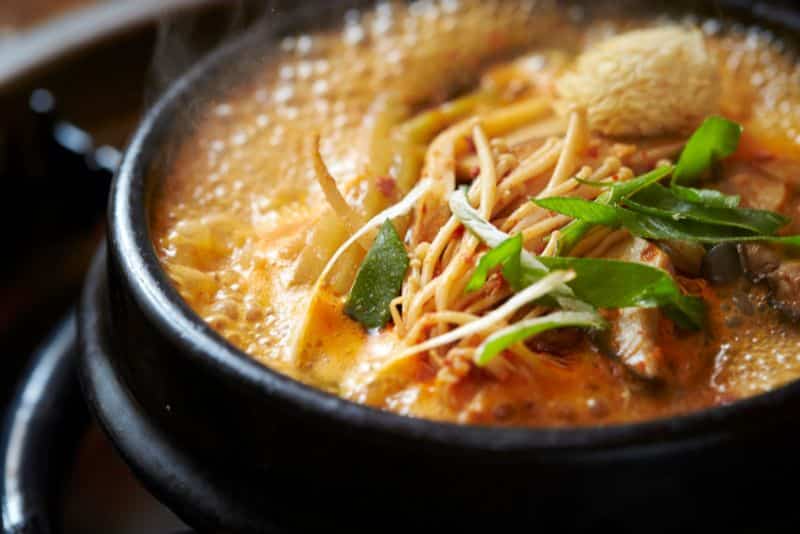Korean cuisine is known for its vibrant flavors, healthy ingredients, and rich cultural heritage. As a mom, you play a vital role in nourishing your family and introducing them to diverse culinary experiences. In this guide, we will explore the art of putting together a delicious Korean meal that will delight your loved ones and create lasting memories.

Understanding the Basics of Korean Cuisine
Before diving into the intricacies of Korean cooking, it’s important to familiarize yourself with the key ingredients and cooking techniques that define this cuisine.
Rice is the staple food in Korean meals and serves as the foundation for many dishes. Another key element in Korean cuisine is kimchi, which is a traditional fermented vegetable side dish. Kimchi adds both flavor and health benefits to any Korean meal and is a versatile side dish with different variations. Gochujang, a spicy and savory chili paste, along with other essential condiments such as soy sauce and sesame oil, provide depth and complexity to the flavors.
Korean cooking methods include stir-frying, grilling, steaming, and fermentation. These techniques help elevate the taste and texture of the ingredients, creating a harmonious balance in each dish.
Planning Your Korean Meal
When planning a Korean meal, it’s essential to create a balanced menu that includes main dishes, side dishes (known as banchan), and soups or stews. Popular main dishes like bulgogi (marinated grilled beef), bibimbap (mixed rice bowl), and samgyeopsal (pork belly) offer a variety of flavors and textures.
Banchan, an integral part of Korean cuisine, consists of small side dishes that accompany the main course. Options range from pickled vegetables to seasoned tofu and spicy cucumber salad. Selecting a variety of banchan ensures a diverse eating experience.
Considering the dietary restrictions and preferences of your family members is also crucial. Korean cuisine offers vegetarian and vegan-friendly options, as well as gluten-free alternatives for those with dietary sensitivities.
Gathering the Ingredients
Once you have planned your menu, it’s time to gather the necessary ingredients. While visiting a Korean grocery store is ideal, online shopping options can also provide access to authentic Korean ingredients.
Commonly used ingredients include rice, soy sauce, sesame oil, garlic, ginger, and various vegetables like cabbage, radish, and spinach. If you are looking for fresh produce or specific cuts of meat, it’s important to know where to find them in your local area.
Preparing the Meal
Now that you have all the ingredients at hand, let’s dive into the cooking process. Each main dish requires specific marinades and seasonings, which infuse the meat or vegetables with flavor. Take your time to marinate and prepare the ingredients according to the recipe instructions.
As for banchan, there are countless recipes available for popular side dishes. From the tangy and refreshing napa cabbage kimchi to the savory and crunchy soybean sprout salad, you can experiment with different flavors and textures to create a diverse spread of banchan.
Setting the Table and Serving the Meal
Korean meals are traditionally served family-style, with everyone sharing from the same dishes. To create an authentic experience, set the table with bowls of rice, soup, and banchan. Use chopsticks and spoons for eating, and encourage your family members to try a little bit of everything.
Proper table settings involve arranging the dishes in a specific manner, with rice (bap), soup (jjigae), and banchan placed strategically. This arrangement allows for easy access and ensures a harmonious balance of flavors throughout the meal.
Enjoying the Meal Together
Beyond the delicious food, a Korean meal is about more than just nourishment. It’s an opportunity to connect with your loved ones, share stories, and create lasting memories. Consider decorating the table with Korean-inspired elements, play some traditional Korean music in the background, and encourage everyone to participate in the conversation.
Remember, the joy of a Korean meal lies not only in the flavors but also in the shared experience. Embrace the culture, embrace your role as a mom, and savor the moments spent together around the dinner table.

Putting together a Korean meal is not just about cooking—it’s about embracing a rich culinary tradition and creating memorable experiences for your family. By understanding the basics of Korean cuisine, planning a balanced menu, gathering the necessary ingredients, and enjoying the meal together, you can embark on a culinary journey that will enrich your family’s lives for years to come. So put on your apron, gather your loved ones, and let the aromas of Korean cuisine fill your kitchen.
